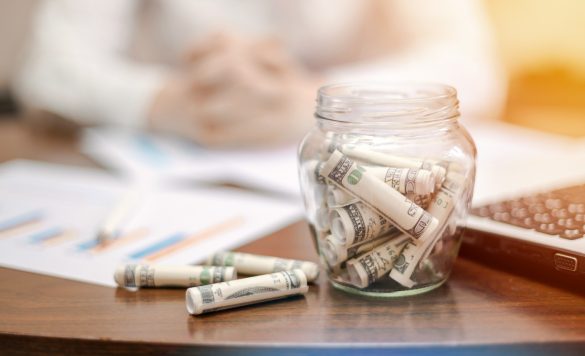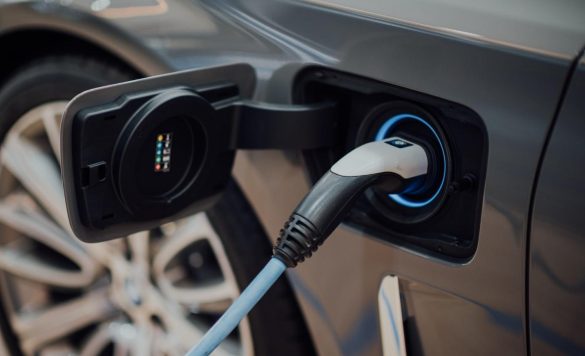13 Ways to Rebuild Your Emergency Fund
Updated on: by Amy Kennedy

In life, unexpected expenses can pop up at any moment, from sudden medical bills to urgent car repairs. That’s why having an emergency fund is critical.
Need Easy Extra $350+/Month For Free?
- SwagBucks: Watch videos, take surveys, shop and more to earn real money. Earn up to $35 per survey! No hidden fees and completely free. Join Swagbucks Now to Get $5 Free
- InboxDollars: Has so far paid its members over $40 Million. Watch videos, take surveys, shop and more. Join InboxDollars Now and Get Free $5
- SurveyJunkie: Make $5-$25 in your spare time from home to take online surveys, participating in a Focus Groups and trying new products. Join SurveyJunkie Now
- Branded Surveys: Complete online surveys. Collect points. Redeem your points for cash & gift cards. No hidden fees and completely free! Has so far paid its members over $18 Million. Join Branded Surveys Now
However, if you’ve recently had to dip into this fund, you may be wondering how to replenish it.
In this blog, we’ll explore 13 effective ways to rebuild your emergency fund and fortify your financial safety net.
Understanding the Importance of an Emergency Fund
Protecting Against Financial Uncertainty
An emergency fund is a financial buffer that safeguards you against unexpected events, such as sudden medical expenses, car repairs, or job loss. Without an emergency fund, these unforeseen costs can lead to debt, causing financial strain and stress.
Financial Security and Independence
Having an emergency fund not only provides financial security, but also gives you the independence to make decisions without being constrained by immediate financial implications. This financial cushion allows you to handle life’s surprises without derailing your budget or falling into debt.
Recommendations from Financial Experts
Financial experts like those at Dave Ramsey typically advise having three to six months’ worth of living expenses in your emergency fund. This sum, however, isn’t one-size-fits-all, and may vary based on your individual circumstances, financial commitments, and comfort level.
Determine Your Emergency Fund Target
Assessing Your Monthly Expenses
Before you start rebuilding your emergency fund, it’s important to determine your monthly expenditure. Include all costs, from housing and food to insurance premiums and personal spending.
This assessment gives you an understanding of the amount you need to sustain your lifestyle for a month without any income.
Determining Your Comfort Level
Once you’ve calculated your monthly expenses, it’s time to consider how many months’ worth of expenses you want to cover in your emergency fund. This number usually ranges between three and six months, but it ultimately depends on your comfort level and personal situation.
Setting Your Emergency Fund Goal
Your emergency fund goal is then determined by multiplying your monthly expenses by the number of months you wish to cover. Remember, this is not a fixed goal and should be reassessed periodically as your financial circumstances change.
This goal sets the foundation for your emergency fund rebuilding plan.
13 Ways to Rebuild Your Emergency Fund
Re-evaluate Your Budget
The first step to rebuilding your emergency fund is to take a close look at your budget. Are there areas where you could cut back or eliminate spending? Are there places where you could redirect money to your emergency fund?
Your budget is a key tool in rebuilding your emergency fund. By understanding where your money is going, you can make informed decisions about how to save more effectively.
Start Small
Don’t be discouraged if you can’t put large amounts of money into your emergency fund right away. Even small contributions can add up over time. Aim to save a small, manageable amount each month.
As you adjust to your new budget, you may find opportunities to increase this amount.
Remember, the goal is to consistently contribute to your fund. Whether you’re saving $10 a month or $100, the important thing is that you’re making regular additions to your emergency fund.
Need Easy Extra Cash?
Pinecone Research, a leading name in online survey panel honesty, absolutely guarantees $3 cash for every survey you complete!
Take advantage of their time limited New Membership drive and register NOW. Join today: 100% free!
Join Pinecone Research Now
Automate Your Savings
Setting up automatic transfers to your emergency fund can make saving much easier. You can schedule these transfers to coincide with your payday, so the money goes straight into your emergency fund before you have a chance to spend it.
This “set it and forget it” strategy can be very effective. Plus, many banks and credit unions offer automatic transfers, making this an easy way to rebuild your emergency fund.
Cut Back on Non-Essential Expenses
Take a look at your monthly expenses and identify any non-essential items that you could cut back on. This might be subscription services, gym memberships, or frequent take-out meals.
It doesn’t mean you have to give up all the things you enjoy. Instead, try to find a balance between enjoying the present and preparing for the future.
Boost Your Income with a Side Hustle
If cutting back on expenses isn’t enough to meet your savings goals, consider ways to increase your income. A side hustle can be a great way to earn extra money that can go straight into your emergency fund.
There are many side hustles you could consider, from freelance work to tutoring to selling handmade items online. Websites like Upwork and Etsy can be great platforms for finding freelance work or selling handmade goods.
Save Your Tax Refund
Instead of spending your tax refund on a big purchase, consider putting it into your emergency fund. This can be a significant boost to your savings and get you closer to your emergency fund goal.
Remember, it’s not how much money you earn, but how much money you save that really counts. Using windfalls like tax refunds to boost your savings can make a big difference in your financial health.
Redirect Certain Savings
If you’ve recently paid off a loan or a credit card, consider redirecting those payments into your emergency fund. You’re already used to budgeting for that expense, so it shouldn’t affect your day-to-day finances.
This can be an effective way to rebuild your emergency fund without feeling a pinch in your monthly budget. Plus, it’s a great way to continue the good financial habits you developed while paying off your debt.
Sell Unused Items
Most of us have items lying around the house that we don’t use or need. Selling these items can be a great way to make some extra cash to put into your emergency fund.
Consider selling clothes you no longer wear, furniture you don’t need, or electronics you don’t use. You can sell these items online through platforms like eBay or Facebook Marketplace.
Cut Down on Eating Out
Eating out can be a significant expense. By preparing meals at home, you can save money and put the savings into your emergency fund.
It’s not just about cutting out all restaurant meals. It’s about finding a balance and making conscious decisions about when to eat out and when to cook at home. Even cutting out one or two restaurant meals per week can lead to significant savings over time.
Negotiate Your Bills
Believe it or not, many of your monthly bills can be negotiated. This includes bills for cable, internet, and even some utilities.
By negotiating these bills, you could potentially save a significant amount of money each month.
Start by calling your service providers and asking if there are any discounts or promotions available. Be sure to do your research beforehand so you know what rates are being offered by competitors.
Every dollar saved is a dollar that can go into rebuilding your emergency fund.
Take Advantage of Cash-Back Apps
Cash-back apps are a great way to earn a little extra money on purchases you’re already making. These apps give you cash back for buying certain items or shopping at certain stores.
Apps like Ibotta and Rakuten are easy to use and can add up to significant savings over time. You can then deposit the cash back you earn directly into your emergency fund.
Try a Savings Challenge
Savings challenges can make saving money fun and motivating. These challenges provide a framework for saving certain amounts of money over a specific period of time.
There are many different savings challenges you could try, like the 52-Week Savings Challenge, the No-Spend Challenge, or the $5 Challenge. These challenges can add a fun element to saving and can help you stay motivated as you rebuild your emergency fund.
Dedicate a Percentage of Unexpected Money
If you receive unexpected money, such as a bonus at work, a gift, or a tax refund, consider dedicating a percentage of it to your emergency fund. This is a painless way to boost your savings without impacting your regular budget.
It’s okay if you can’t dedicate the entire amount—every little bit helps. Even if it’s just 10% or 20% of the unexpected money, it will still bring you closer to your emergency fund goal.
Monitoring Your Progress
Using Tracking Tools
Monitoring your progress is a critical aspect of rebuilding your emergency fund. Witnessing your savings grow can be highly motivating and help maintain your commitment to your goal.
There are multiple ways to track your progress, such as using a savings app or keeping a simple Excel spreadsheet.
Celebrating Milestones
It’s important to acknowledge your achievements along the journey. Set specific milestones as you progress towards your goal and celebrate when you reach them.
These could be when you save your first $100, reach the halfway mark, or finally hit your emergency fund target. Celebrating these victories, no matter how small, can be a great source of motivation and reassurance that your hard work is paying off.
Constant Review and Adjustment
Continuously review your progress and make adjustments as necessary. If you find that you’re falling behind, take a look at your budget and see where you can make changes.
Earn Everything… nearly!
Join Opinion Outpost, one of the few faithful and honest survey panels and earn cash and gift cards for your opinion. Stack your points and redeem them: Simple! No hidden fees and completely free!
Join Opinion Outpost Now
Remember, this isn’t about speed, but about steadily building up a secure financial cushion.
Keeping Your Emergency Fund Intact
Using the Fund Wisely
After successfully rebuilding your emergency fund, the next challenge is to keep it intact. The goal is to use this fund only for true emergencies.
Before tapping into your emergency fund, critically evaluate if the expense is unexpected, necessary, and urgent. This will help you avoid unnecessary depletion of your fund.
Separating Your Emergency Fund
Setting up a separate savings account for your emergency fund can be very beneficial. This removes the temptation to dip into these funds for daily expenses, thereby preserving it for genuine emergencies.
Several banks offer high-yield savings accounts that can help your emergency fund grow over time.
Automating Your Savings
Consider setting up automatic transfers to your emergency fund account. This can be a percentage of your paycheck or a fixed amount each month.
Automating your savings takes the effort out of the process and ensures consistent growth of your emergency fund over time.
Conclusion
Rebuilding your emergency fund might feel like a daunting task initially, but it’s absolutely achievable with patience, commitment, and the right strategies.
By incorporating these 13 tips into your financial routine, you’ll be well on your way to restoring your safety net.
Remember, every dollar counts, and over time, those small contributions will add up to provide a solid financial cushion for any unexpected expenses that come your way.
Related Posts:
- Building an Emergency Fund: Why and How to Start Now
- What Is a Sinking Fund and 9 Ways to Create One?
- The Importance of Emergency Savings
- 12 Ways to Budget for Unexpected Expenses
- 9 Ways to Live a Debt-free Life in 2023
Earn Everything… nearly!
Join Ipsos iSay, one of the few Faithful and Honest survey panels and earn prizes, gift cards and donations. Stack your points and redeem them: Simple! No hidden fees and completely free!























Comments
Click here to post a comment...
Post comment